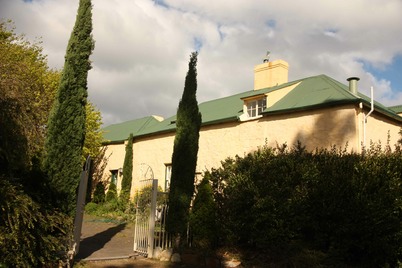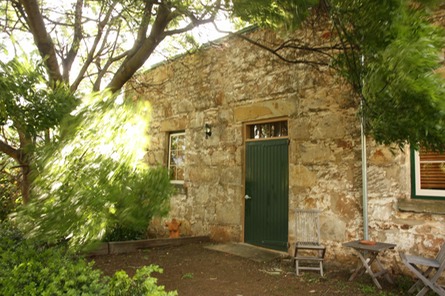 The farm gate is, of course, the entrance, and you're making a U turn where you'd really prefer not to make one to get back there.
The farm gate is, of course, the entrance, and you're making a U turn where you'd really prefer not to make one to get back there.
Once you're inside the gate there's a relative calm, or rather there would have been if it hadn't been for traffic noise as the rush hour started to built and the wind, which was stronger than anything I've experienced outside an actual cyclone. When an inhabitant of Blowing' Bowen tells you it's windy you can rest assured there's something approaching a gale on the old Beaufort scale, and this was bloody windy.
Inside The Barn, however, the traffic noise was substantially reduced and while the wind howled the chill factor was negligible.

Built during the 1820’s and 1830's the buildings were the centrepiece of Richard Cleburne’s estate on the bank of the Derwent, a fewf hundred metres from Risdon Cove, where a party under the command of the Royal Navy’s Lieutenant John Bowen landed in September 1803. Bowen was under orders to found a British settlement in Van Diemen's Land to forestall French interest in the island.
The settlement didn’t last, being transferred across the Derwent after a turbulent five months
Cleburn’s Mount Direction Homestead had attractive gardens and an orchard, and the whole property is listed as Classified on the National Trust Register after engineers planned to bulldoze the buildings to make way for the Bowen Bridge in the 1980s. The buildings may have been saved and carefully restored, but one can’t help suspecting a lingering resentment on the part of officialdom expressed through that entrance.
I may, of course, be wrong about that.